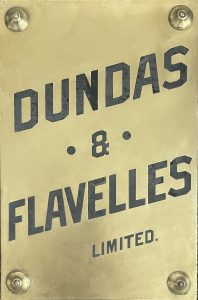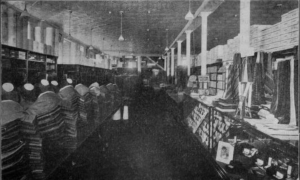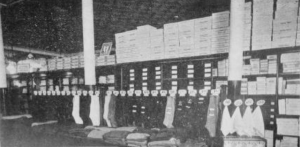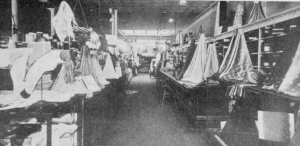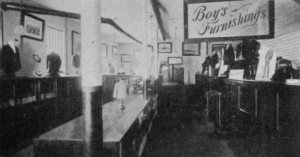Dundas & Flavelles Ltd.
The Flavelle brothers grew their small dry goods store into one of the largest department stores in Ontario outside of the Toronto area. After their partnership ended with J. R. Dundas upon his death in 1896. William and J. D. assumed full control of the Lindsay store. By the 1900s, William and J. D. was the sole manager.
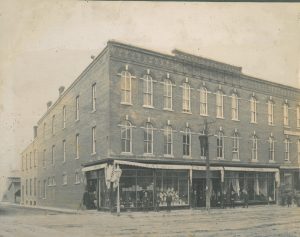
Dundas & Flavelle Bros. after their expansion into neighbouring stores creating a 10,000 sq. ft. department store. 1904.
Competition began quickly growing among department stores in Ontario with the likes of The T. Eaton Company and Robert Simpson Company capturing the market. William and J. D. had to fight for relevance with other businessmen, including their younger brother, Joseph, who bought the interests of the Robert Simpson Company in 1896. Fearing the threat of a possible acquisition, the brothers expanded the firm by taking over the adjacent premises of Beall’s jewelry store which provided the town with an immense economic opportunity. Occupying nearly 10,000 square feet with three complete floors, the firm was able to employ more than 80 employees among their eleven departments.
The Flavelle name became subject to increased scrutiny and public attention. The Flavelles aided in developing Victoria County and Lindsay from a frontier area to one that had enough potential and opportunity to attract people to it, becoming quite personally successful in the process. One such critic was Sir Sam Hughes, owner of the Victoria Warder newspaper and no friend to the family. Hughes believed that urbanizing and innovating towns and business would cause men to lose their masculinity. He resented the Flavelles’ success, lashing out and unleashing accusations against the brothers and their business.
Weathering the accusations appearing in the press, William and J. D. gained investors’ trust, allowing them to incorporate in 1904 under the name of Dundas & Flavelles Limited.
Drawing attention from a 30 foot long window, William arranged the men’s department in a systematic way with tables, racks, and cabinets for easy access by customers. The tables that were near the entrance were used for the less expensive items priced under $13.50. Racks and glass dust-proof cabinets on the left wall were strictly reserved for pricier jackets, pants, and overcoats that ranged between $20 and $25. William encouraged his staff to let customers pick their own clothing as he saw it as a way to increase sales.
The sock and handkerchief table and racks were designed with the same intention as the men’s wear. Customers were encouraged to “grab-and-go” these 25 cent socks and ties that were always in stock.
Post World War I, the way clothing was displayed in stores changed. Fabrics and patterns became bolder so rather than display monochromatic designs and plain goods, it became typical for these dress goods to have more elaborate displays. The skylight at the back of the store would enhance these new modern offerings to the delight of local women.
Added in 1918, “boy’s furnishings” (under age 16) became its own department during a time when military calls decreased the demand for young men’s clothing. William placed the department at the back of the store to give boys and their mothers a quiet place to shop for all of their needs which included hats, socks, ties and coats/ Essentially it was a one-stop shopping experience.


